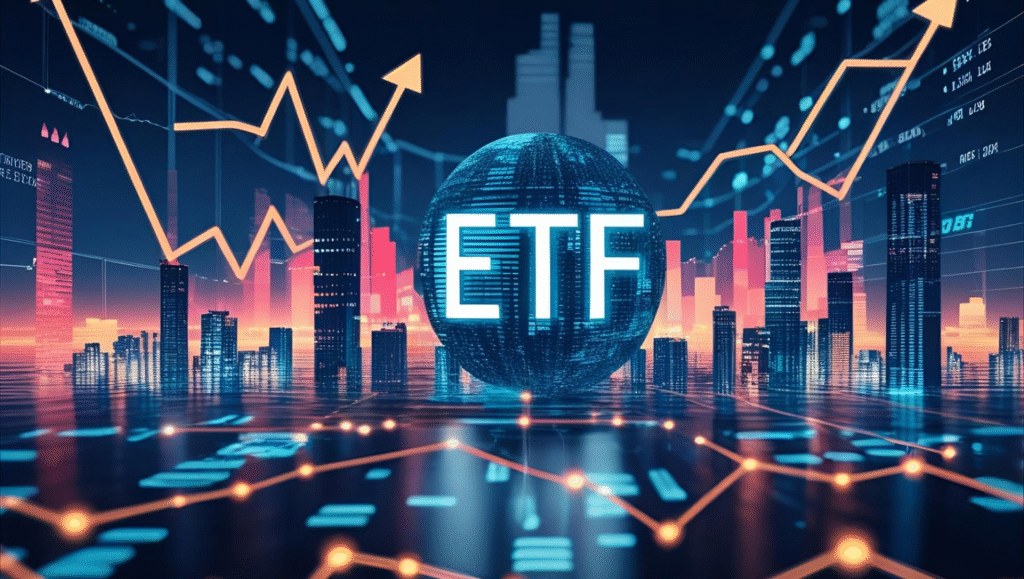
In a move that blends amplified upside potential with built-in downside protection, Leverage Shares is launching a new suite of exchange-traded funds (ETFs) designed to offer twice the monthly performance of select high-volatility stocks, while capping losses at the underlying stock’s decline. The first batch, targeting Tesla (TSLA), Nvidia (NVDA), Coinbase (COIN), MicroStrategy (MSTR), and Palantir (PLTR), is set to debut on August 12, 2025, on major U.S. exchanges.
These innovative products, dubbed 2x Capped Accelerated Monthly ETFs, reset their leverage monthly rather than daily, using options to provide approximately 2x the positive return of the underlying stock up to a predefined cap. On the flip side, they aim to track just 1x the negative return, effectively buffering against steeper losses without additional downside protection beyond that.
For instance, the Leverage Shares 2x Capped Accelerated TSLA Monthly ETF (TSLO) seeks to deliver twice Tesla’s share price gains over a full calendar month, subject to an upside limit, while mirroring only the single downside movement. This structure mitigates the compounding risks often associated with traditional daily-reset leveraged ETFs, which can erode returns in volatile markets.
The launch comes as buffer ETFs—funds that offer limited downside risk in exchange for capped upside—continue to surge in popularity. Assets under management in buffer ETFs have grown dramatically, from about $4.6 billion in 2020 to over $70 billion by mid-2025, driven by investor demand for strategies that balance growth with protection amid economic uncertainty.
In the first half of 2025 alone, these funds attracted more than $8 billion in net inflows, reflecting a broader trend of risk aversion even as major indices hit record highs. Industry experts note that volatile conditions, including interest rate fluctuations and geopolitical tensions, have fueled this growth.
Eric Balchunas, a senior ETF analyst at Bloomberg, described the new offerings as a clever fusion of leverage and buffers in a recent post on X (formerly Twitter). “LeverageShares is combining 2x stock ETFs with Buffers,” he wrote, explaining that the monthly reset uses options to eliminate compounding effects while limiting downside to 1x the stock’s loss.
This approach, Balchunas suggested, could appeal to traders seeking amplified exposure without the full brunt of leveraged volatility.
Leverage Shares, known for its range of leveraged and inverse exchange-traded products (ETPs), filed for these ETFs earlier in the year, with the initial prospectus outlining an expense ratio of 0.75% and a derivatives-based strategy. The funds are actively managed but aim to replicate performance through swaps and options, with no currency hedging. Tickers include TSLO for Tesla, NVDO for Nvidia, COIO for Coinbase, MSOO for MicroStrategy, and PLOO for Palantir.
These stocks were chosen for their high trading volumes and investor interest, particularly in tech and crypto sectors, where volatility is commonplace.
While the products promise a more controlled risk profile, experts caution that they are not without pitfalls. Leveraged ETFs, even with buffers, are best suited for short-term trading due to their complexity and potential for deviation from expected returns over longer periods. The cap on upside gains means investors forgo unlimited compounding in strong bull runs, and the monthly reset could still lead to underperformance in choppy markets. Moreover, as with all derivatives-based funds, there are risks from counterparty defaults and liquidity issues.
This launch aligns with a wave of innovation in the ETF space, where issuers like Innovator and BlackRock have expanded buffer offerings to include max-buffer strategies and global equity exposure. As of early 2025, over 200 buffer ETFs were available, managing $43 billion in assets, a figure that has since climbed amid market sell-offs and advisor recommendations for defensive positioning.
For retail and institutional investors alike, these new Leverage Shares ETFs represent an evolving tool in portfolio management, offering a middle ground between aggressive leverage and conservative buffering. As the market digests this development, trading volumes on launch day will be closely watched for signs of broader adoption.











 Join our Telegram Channel
Join our Telegram Channel